What is postmodern architecture? When, where and how did postmodernism in architecture emerge? What are main characteristics of postmodern buildings? Here is postmodern architecture history from A to Z and famous postmodernist architects…
Contents
What is Postmodern Architecture?
Postmodern architecture is an international architectural style that emerged in the 1960s as a reaction to the monotony of modern architecture and developed in the 1970s, re-emphasizing the architectural forms of ancient times as aesthetic elements. J.C. Jencks gave his name to the current. In his book “The Language of Post-Modern Architecture” published in the 1970s, he argued that modern architecture is dead.
Postmodern architecture is an eclectic movement that refers to the past by recreating design elements from different periods in a contemporary climate in order to alleviate the strict rules of modernism. Postmodernism is characterized by symbolism and irony. It reintroduces arbitrary ornamentation into architecture. It is vibrant and sculptural. It removes the architect from having a purely functional role. It aims to establish a dialogue between architectural ideas, styles, culture and history.
Note: Don’t forget to read our article on Architectural History and Architectural Styles from prehistory to the present!
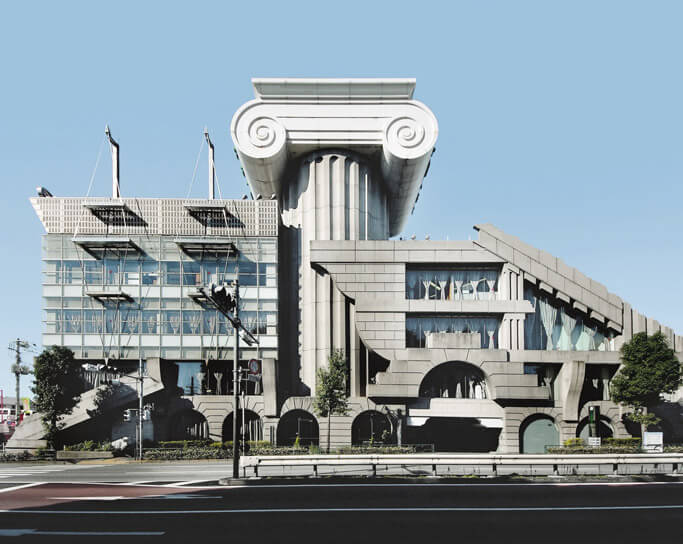
Postmodern architecture often has curved forms, dysfunctional ornaments, asymmetry, vibrant colors, and symbolic features borrowed from previous eras. Postmodern buildings can refer to local traditions, popular culture, modernism, high technology at the same time; however, it does not highlight any of these factors.
Postmodernism in Architecture
Postmodernism in architecture was developed from the 1980s to the 1990s, especially with the work of Scott Brown & Venturi, Philip Johnson, Charles Moore and Michael Graves. At the end of the 1990s, it was divided into different styles such as high-tech, neo-futurism and deconstructivism.
Note: Before moving on to the history of postmodern architecture, we recommend that you read our article ‘What is Modern Architecture‘ to get information about the history, features and examples of modern architecture.
Postmodern Architecture History
When and Where Did It Appear?
Postmodernism in architecture first started in the United States in the 1960s. Later, it spread to Europe and continued its influence until today. Postmodern architecture, in the 1960s, to the shortcomings of modern architecture; especially as a reaction to its strict doctrines, monotony, lack of ornament, and ignoring the history and culture of the cities in which it emerged. The postmodern movement was formalized in Robert Venturi’s book “Complexity and Contradiction in Architecture” in 1966.
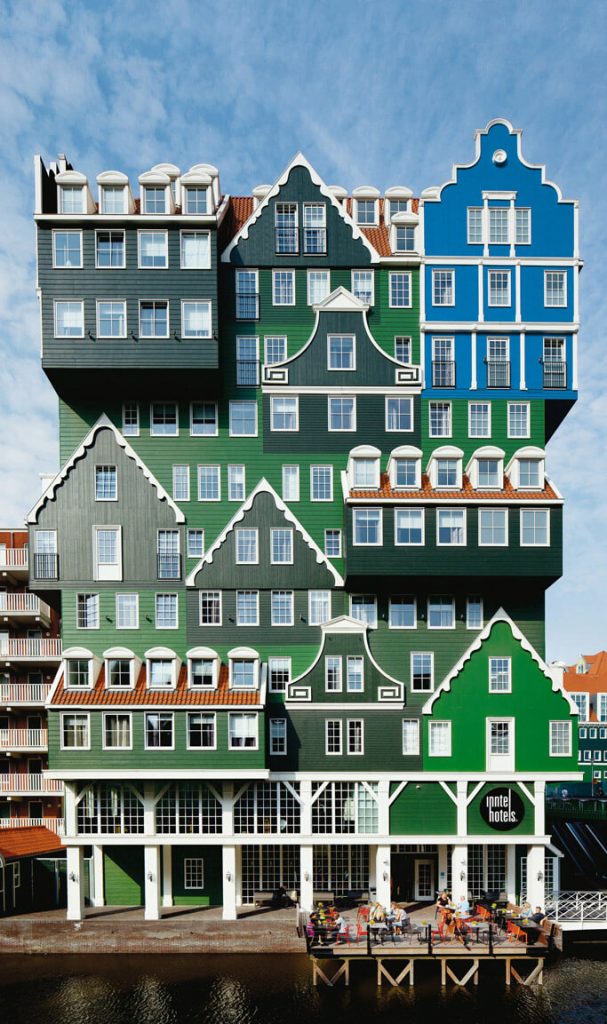
Instead of the functional doctrines of modernism, Venturi proposes the use of façade decorations, historical elements, unusual use of different materials and historical symbols, and the use of the modulation system to make the building interesting. In addition, Venturi wrote the book “Learning from Las Vegas” in 1972 with architect and urban planner Denise Scott Brown (his wife and partner) and Steven Izenour. This book contributed to the development of the postmodernist movement by further developing the common arguments against modernism.
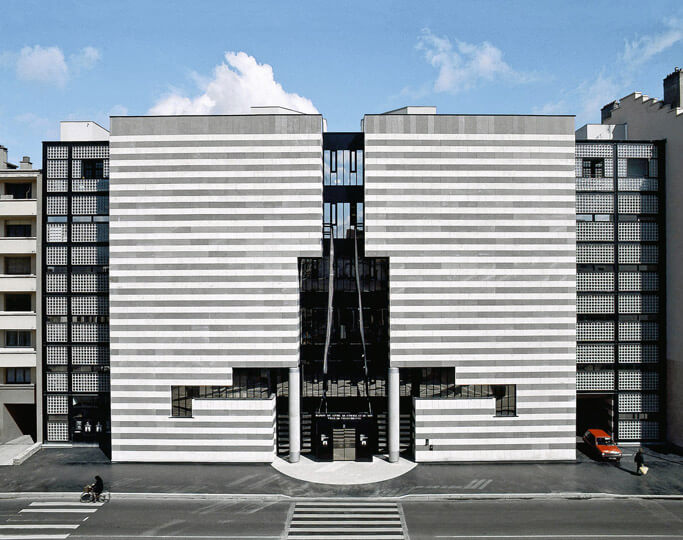
Scott Brown argues that buildings should be built for people and that architecture should listen to them. Scott Brown and Venturi argue that “diversity and communication” needs can be met with decorative elements. In response to Mies van der Rohe’s slogan “Less is more”, Venturi responded with the slogan “Less is a bore”. Thus, an architectural style has emerged that combines history with modern, local architecture with technology, in short, making use of the entire history of architecture.
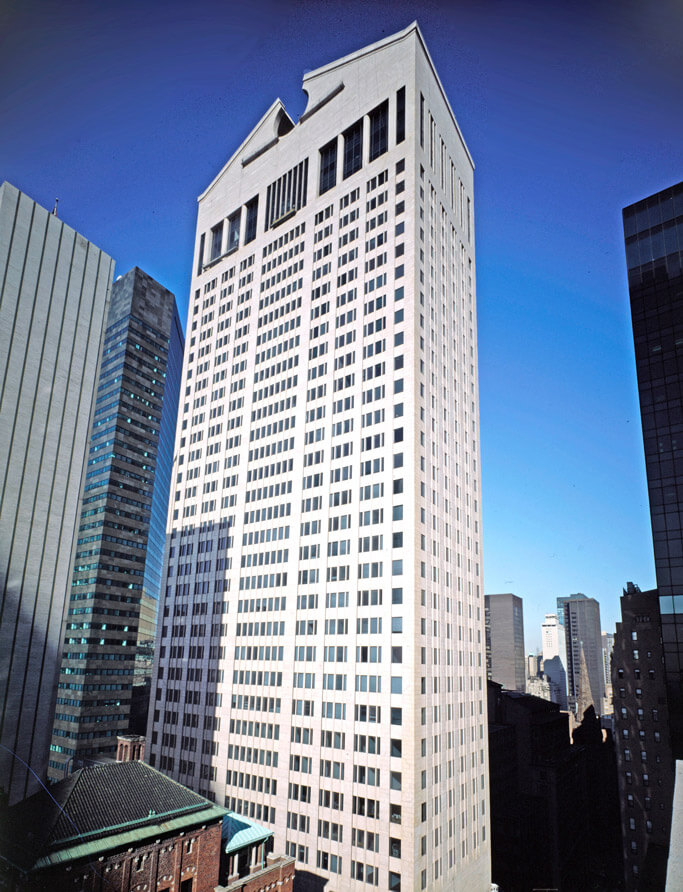
Examples of postmodern architectural transitions include the Portland Building in Portland, Oregon and the Sony Building in New York. These structures reference the past and reintroduce color and symbolism into architecture. Considered one of the first postmodern architecture examples, the AT&T Building (today’s Sony building) received positive and negative reactions when it was completed in 1984. The building is a tall skyscraper that borrows cutting edge technology. At the same time, the top of the skyscraper has a paradoxically ancient connotation.
Why and How Did It Appear?
After the end of World War II in 1945, many mass housing applications with new construction methods are seen in Europe. In economic and functional housing structures, a great uniformity occurs based on prefabrication and mass production. This pragmatic attitude of the modern architecture movement, which ignores historical and cultural contexts, led to the emergence of postmodern sensitivity in the 1950s.
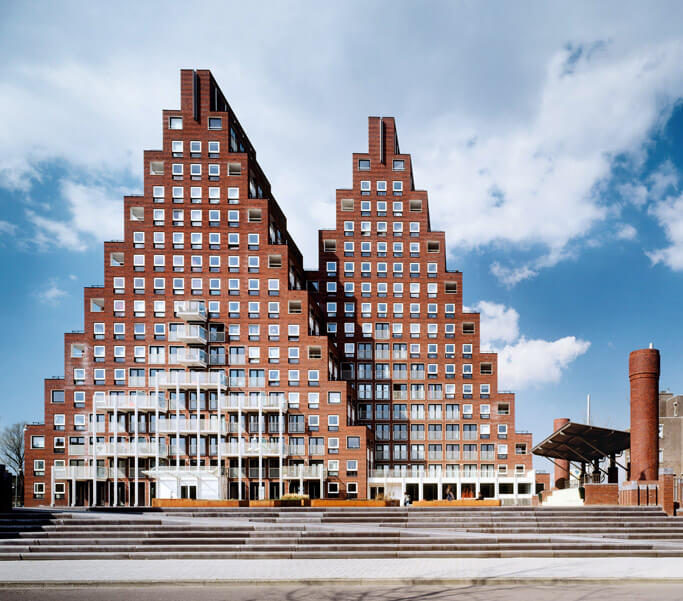
A similar revolt against strict modernism was started in Italy by architect Aldo Rossi, who criticized the reconstruction of Italian cities and buildings destroyed during the war in a modernist style, which has nothing to do with architectural history. Rossi insisted that cities be rebuilt in a way that preserves their historical fabric and local traditions.

Similar ideas were also put forward at the Venice Biennale in 1980. Hans Hollein in Austria, Ricardo Bofill in Spain, France and the USA, Christian de Portzamparc in France, Paolo Portoghesi in Italy, Arata Isozaki and Yasafumi Kijima in Japan have been the leading representatives of this trend.
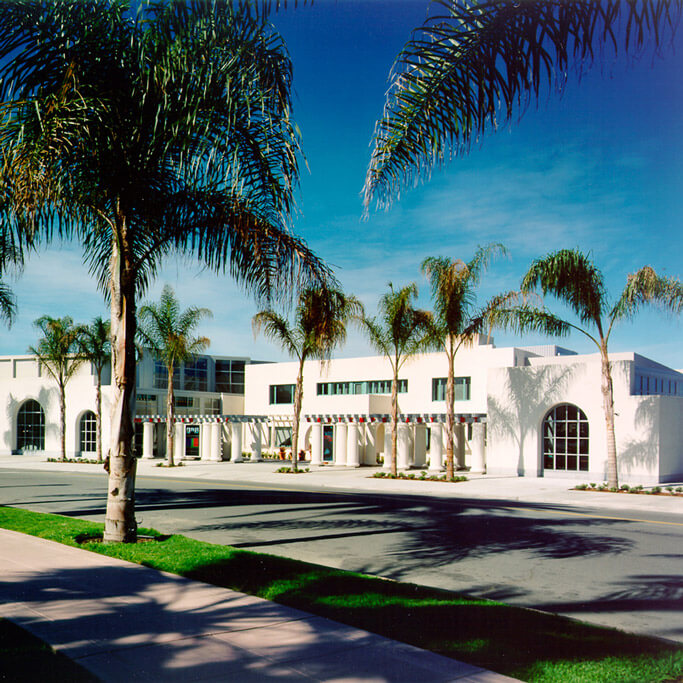
Spanish architect Ricardo Bofill, working in France, took the postmodern architecture style so far as to apply it to prefabrication. Postmodernism in architecture did not remain only in the dimension of buildings, neighborhoods and urban parts suitable for the postmodernist movement were developed in the USA, Germany and France.
Postmodern Architecture Characteristics
The main postmodern architecture characteristics are:
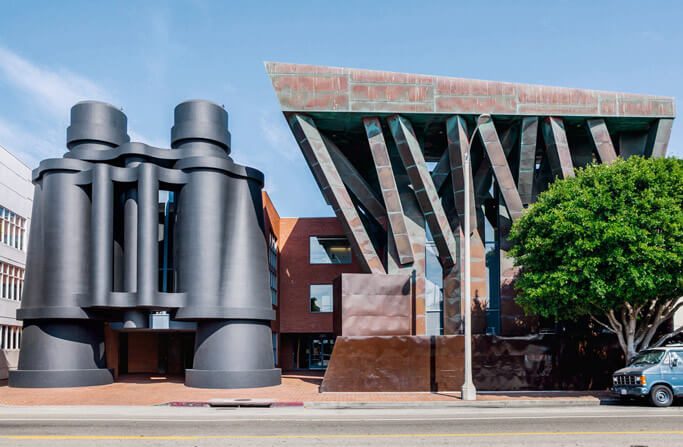
- Confusion and contradiction: Postmodern architecture combines new forms and features with contradictory elements of classicism. A throwback to the past and ornament requires a collage of items borrowed from old styles. Colors and textures are irrelevant to the structure or function of the building.
- Arbitrary decorations: It processes elements of architectural history in new ways. Stylized Greek and Roman columns, pediments, metopes, pop art elements are frequently seen on the facades of postmodern buildings.
- Fragmentation: Postmodern architecture often divides large buildings into several different structures and forms. Sometimes different parts represent different functions. Using different styles and materials, a single building can look like a small town or village.
- Curvilinear and asymmetrical forms: Postmodernist compositions are rarely symmetrical, balanced, and orderly. Usually curvilinear and fluid forms are used.
- Color: Color is important for postmodern buildings; unusual color palettes and combinations are featured. Colored glass, ceramic tiles and stones are used to add variety and personality to facades.
- Humor and sculpture: Theatrical, absurd and sculptural forms come to the fore in the postmodern architectural style. For example, the entrance door is a giant binocular-shaped structure designed by Frank Gehry.
You can read our article titled ‘What is Postmodernism‘ to have information about postmodernist thought and its reflections in different fields.
Postmodernist Architects & Famous Postmodern Buildings
Robert Venturi
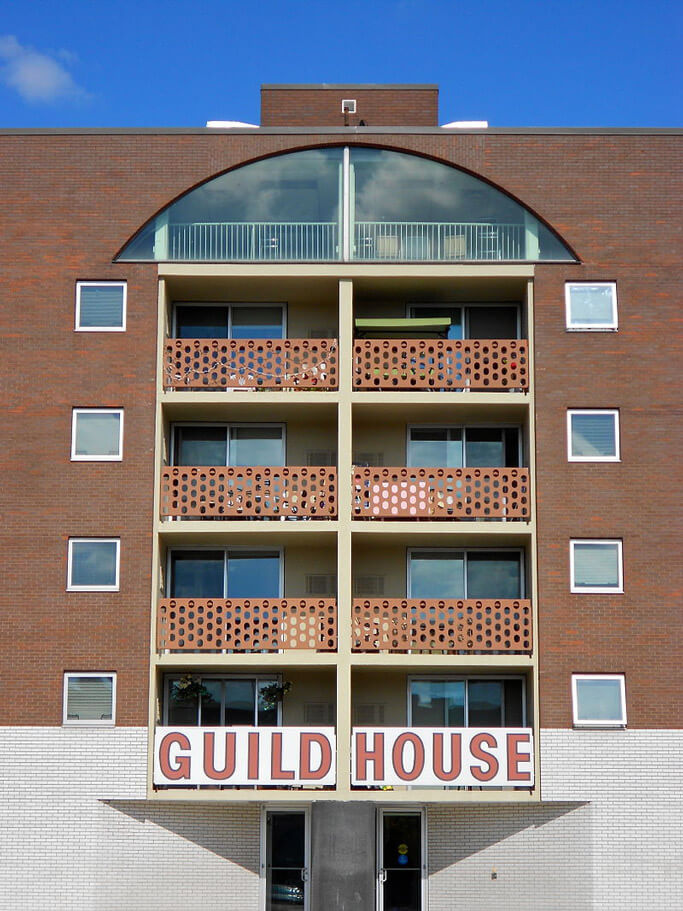
Born in 1925, Robert Venturi is an architect who is both the leading theorist of postmodernism and a pioneer of the postmodern architecture style. Finding modern architecture ugly and ordinary, Venturi is famous for its “Less is a bore” slogan against Mies van der Rohe’s “Less is more” slogan.

After studying at the American Academy in Rome, he worked in the offices of the modernist architects Eero Saarinen and Louis Kahn until 1958. He later became a professor of architecture at Yale University. His first buildings are the “Guild House” built in Philadelphia between 1960-1963 and the “Vanna Venturi House” designed for his mother in 1964. These two houses later became symbols for Postmodern architecture. In the 1960s and 1970s, he created many structures that combine existing architectural forms with historical elements.
Charles Moore
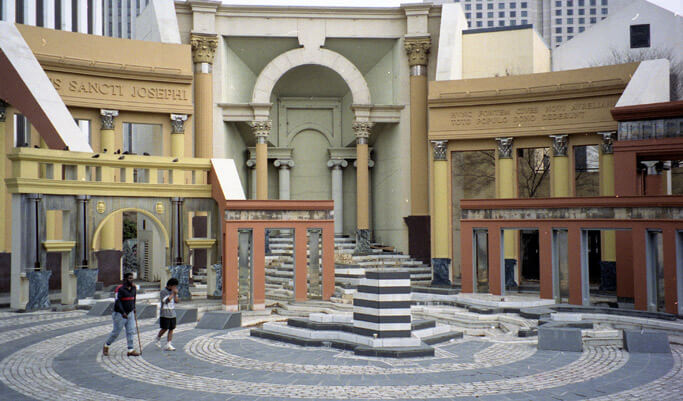
The architect’s most famous work is the Piazza d’Italia, built in 1978 in New Orleans. In the design of the square, it brings together important pieces of Italian Renaissance architecture. Moore’s structure named “Beverly Hills Civic Center” is a mixture of Spanish Colonial Architecture, Art Deco and Postmodern styles. Structure; It consists of open and semi-open spaces with stairs, balconies, courtyards, columns and walkways.
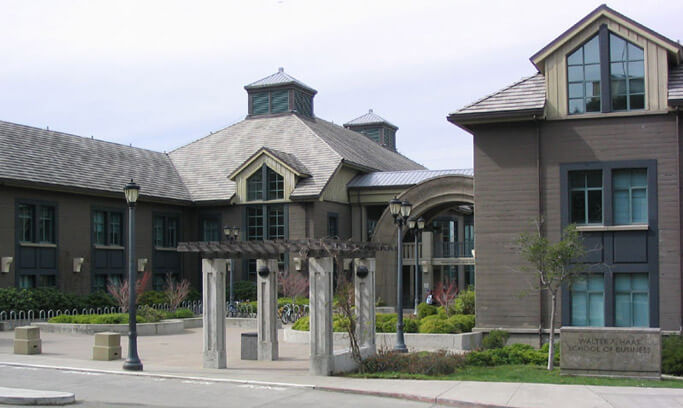
Another famous building of the architect is the Haas School of Business at the University of California. The building’s design is a blend of the neo-Renaissance architecture of the Berkeley campus with the 20th century wooden residential architecture of the Berkeley hills.
Philip Johnson
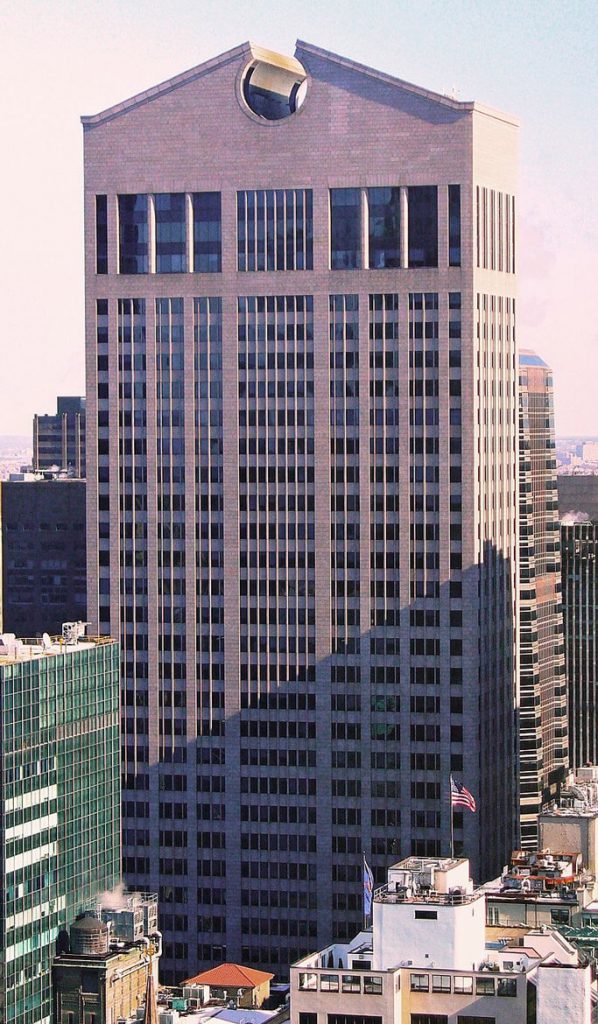
Philip Johnson began his career as a staunch modernist. He is one of the authors of the catalog on “International Style” (Modernism) in the 1935 MOMA (The Museum of Modern Art) exhibition. He worked with Walter Gropius and Marcel Breuer at Harvard. The Glass House project, inspired by Mies in 1949, has become a symbol of the modernist movement. Moreover, he worked with Mies on one of the iconic structures of modern architecture, the Seagrams Building.
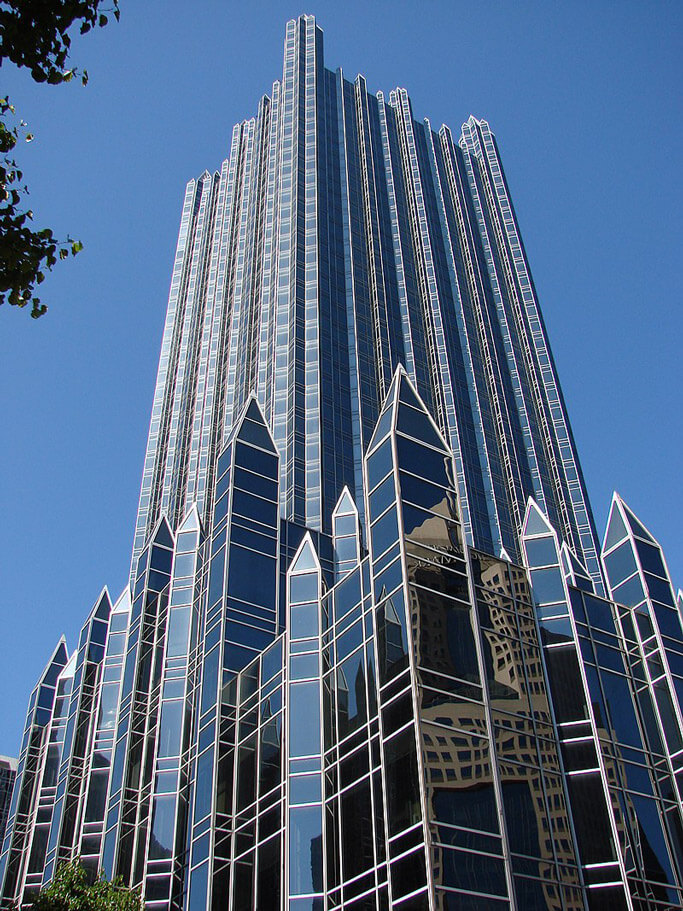
In the 1950s, however, he began to incorporate some iconic styles and forms into his project for the Port Chester Synagogue, with its vaulted, colorful, narrow windows. With the AT&T Building (today’s Sony building), built 1978–1982, Johnson made a definitive return to postmodernism. His intention is to make the building stand out as a corporate symbol amongst the modernist skyscrapers in and around Manhattan, and he succeeds. A short time later, he completed another postmodern project, PPG Place.

In 1995, he builds a postmodern pavilion for the “Glass House” structure. The entrance gate, called “Da Monstra”, is a curvilinear structure made of concrete. This red and gray building is the pioneer of sculptural contemporary architecture of the 21st century.
Frank Gehry
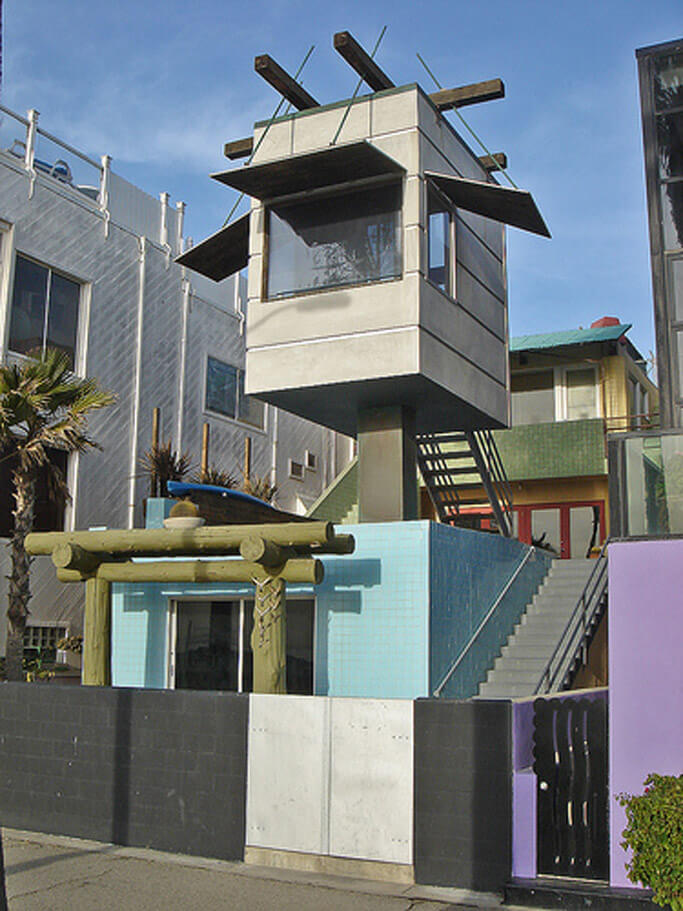
The famous architect, born in 1929, is an important figure for postmodern architecture. He has created masterpieces in France, Germany, Spain, England, the United States, Scotland, Australia, Panama and more. In 1962 he opened his own office in Los Angeles. From the 1970s he designed several unusual homes in Los Angeles, including his own house (1978). Breaking with traditional designs, he starts using prefabricated materials to create unusual forms in home architecture.
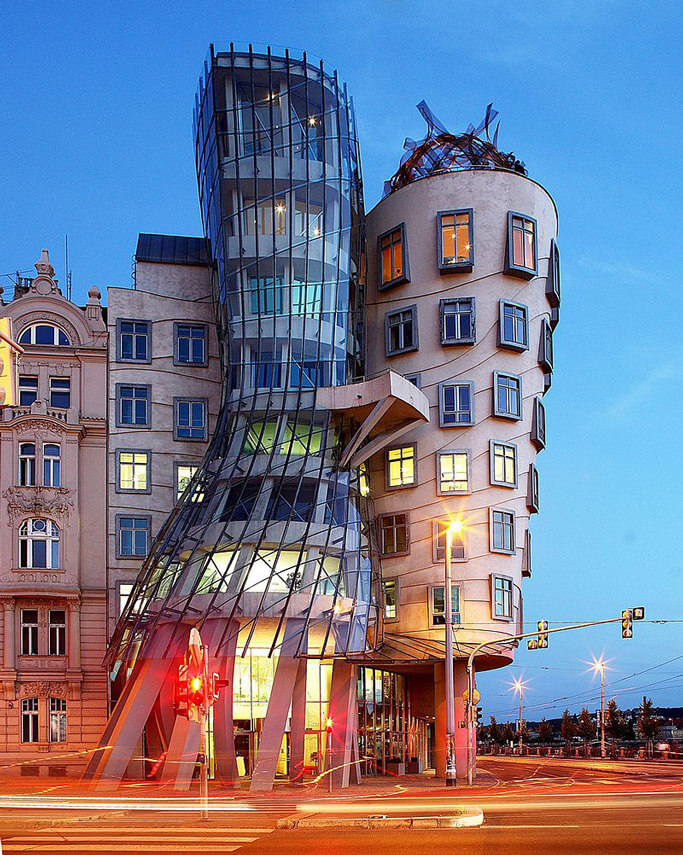
Schnabel House in Los Angeles (1986–1989), Norton Residence in California (1983), Dancing House in Prague (1996) are some of his works. It is best known for the Guggenheim Museum in Bilbao, which Philip Johnson says is the “greatest building of our time”. Another famous work of the architect is the Walt Disney Concert Hall in Los Angeles. Defined as an advocate of deconstructivism, Gehry refused to be involved in any movement.

In this article, we tried to briefly answer the questions of ‘What is postmodern architecture‘ and ‘What are main characteristics of postmodern buildings‘. To understand postmodernism in all its aspects, you can read our article on the ‘What is postmodernism definition‘. Don’t forget to visit our homepage for inspiration on different topics related to interior design & architecture! 🙂



